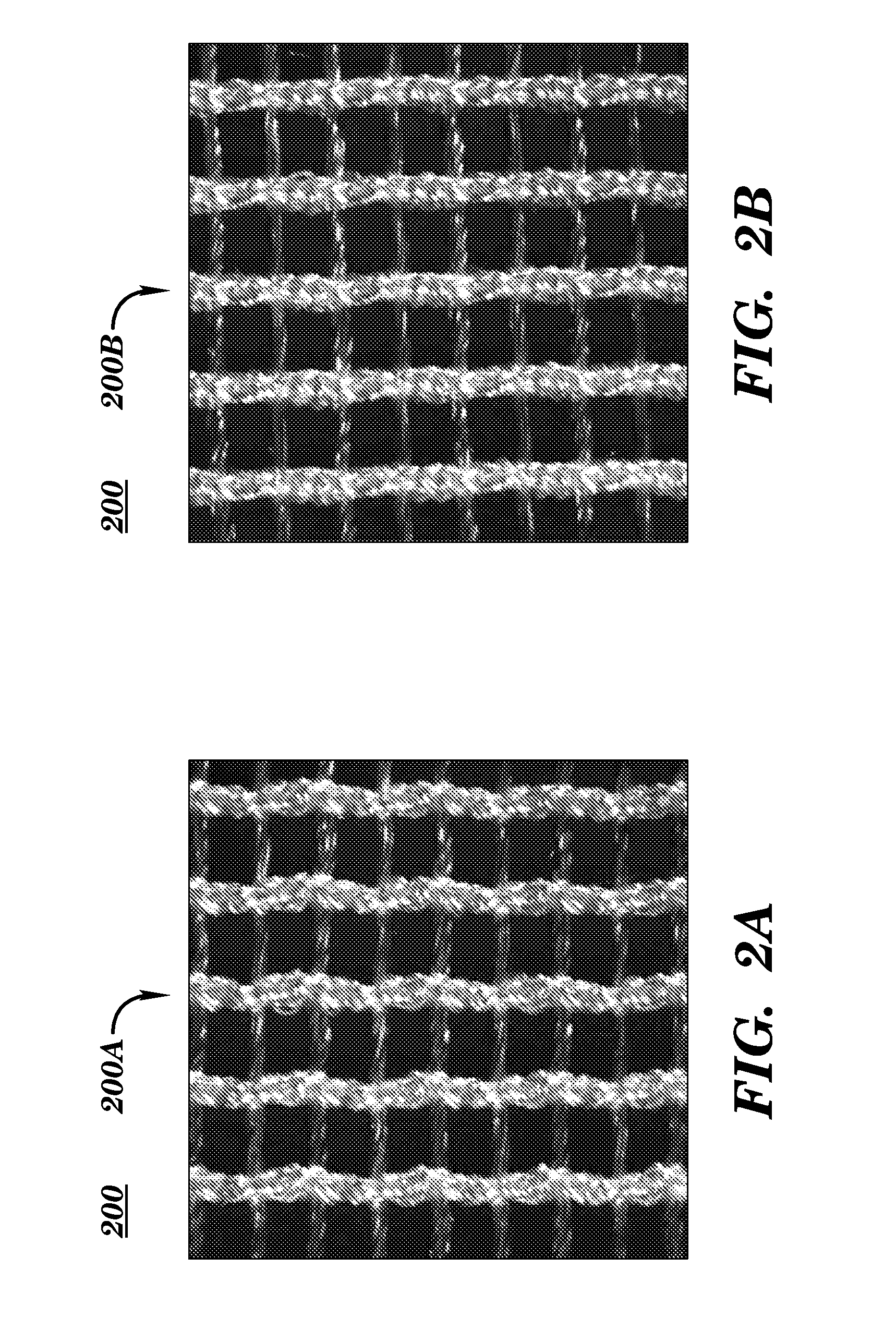Implantable silk prosthetic device and uses thereof
a prosthetic device and silk technology, applied in the field of prosthetic devices, can solve the problems of scar encapsulation and tissue erosion, pain, and a variety of complications, and achieve the effect of reducing tissue erosion, fistulas, or adhesions
- Summary
- Abstract
- Description
- Claims
- Application Information
AI Technical Summary
Benefits of technology
Problems solved by technology
Method used
Image
Examples
example
[0235]An abdominoplasty procedure was conducted using a silk based node-lock mesh having the mesh or scaffold design shown in FIG. 55 and having the dimensions of 10 cm×25 cm. The typical fascial “work” was done first, using a row of figure of eight sutures, first and then another layer of running suture all #1 PDS (polydioxanone suture, Ethicon) Two pieces of silk based node-lock mesh as described above were used as an “onlay” to augment the fascia “tightening”. One 10×25 cm piece was used in the lower abdomen. It was placed transversely, the vertical dimension 10 cm, was positioned with the lower edge at level of the pubic symphysis, and the upper edge at the lower border of the umbilicus. The 25 cm transverse dimension was suitable. A second scaffold was cut and tailored to use in the supra-umbilical region, with care taken not to leave too close to the umbilical closure. As the closure around the umbilicus occasionally may not heal primarily, extra care was taken with sutures / me...
PUM
| Property | Measurement | Unit |
|---|---|---|
| pore size | aaaaa | aaaaa |
| size | aaaaa | aaaaa |
| size | aaaaa | aaaaa |
Abstract
Description
Claims
Application Information
 Login to View More
Login to View More - R&D
- Intellectual Property
- Life Sciences
- Materials
- Tech Scout
- Unparalleled Data Quality
- Higher Quality Content
- 60% Fewer Hallucinations
Browse by: Latest US Patents, China's latest patents, Technical Efficacy Thesaurus, Application Domain, Technology Topic, Popular Technical Reports.
© 2025 PatSnap. All rights reserved.Legal|Privacy policy|Modern Slavery Act Transparency Statement|Sitemap|About US| Contact US: help@patsnap.com



